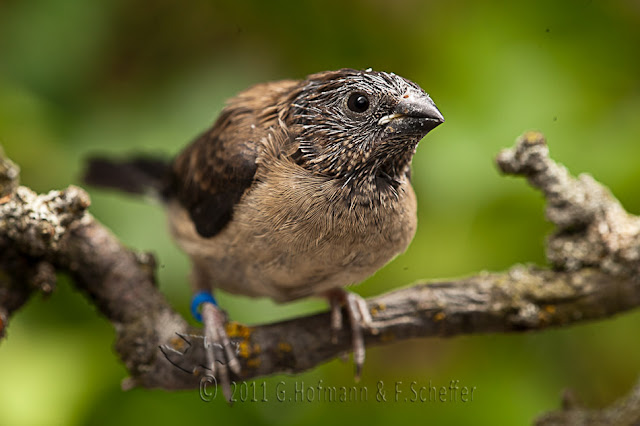- Moluccan Mannikin, Wellenbauchbronzemännchen, Capuchinho-das-molucas, (Lonchura molucca) adult female -
Moluccan Mannikins are among our favourite Mannikins, not only are they very nice and beautiful little creatures they are also easy to keep and breed. Add to this that they are really peaceful and get along with basically every other species . Did we mention they are highly social and a flock of them is a pure joy to watch, how they establish the rank order or explore the aviary... if there is a disadvantage then it's the fact that they are sadly not dichromatic. The female tend to be less pure white it is kind of a brownish white and the middle two tail feathers are less pin-pointed but this has to be taken with a big grain of salt. It worked well with wild birds but after several generation of interbreeding at least two subspecies and selecting for bigger and more whitish birds this no longer is true for all birds. Either DNA sexing or starting out with a small flock is the solution both cases will probably cost the same and it's up to the space available and the personal preference which way to go. They breed well housed as a single pair in a double breeder or in a mixed-species aviary. |





